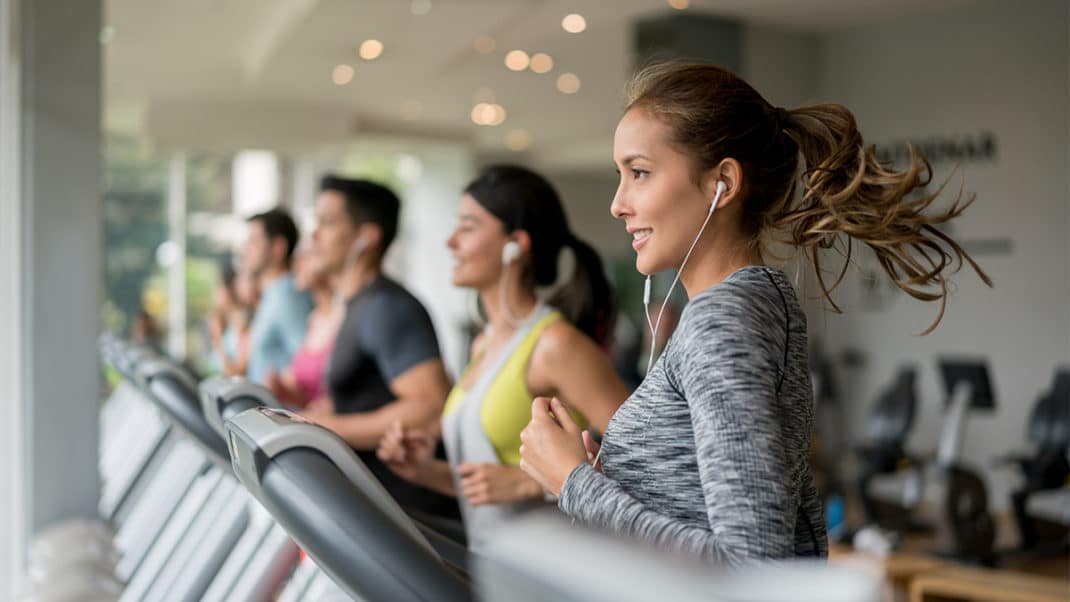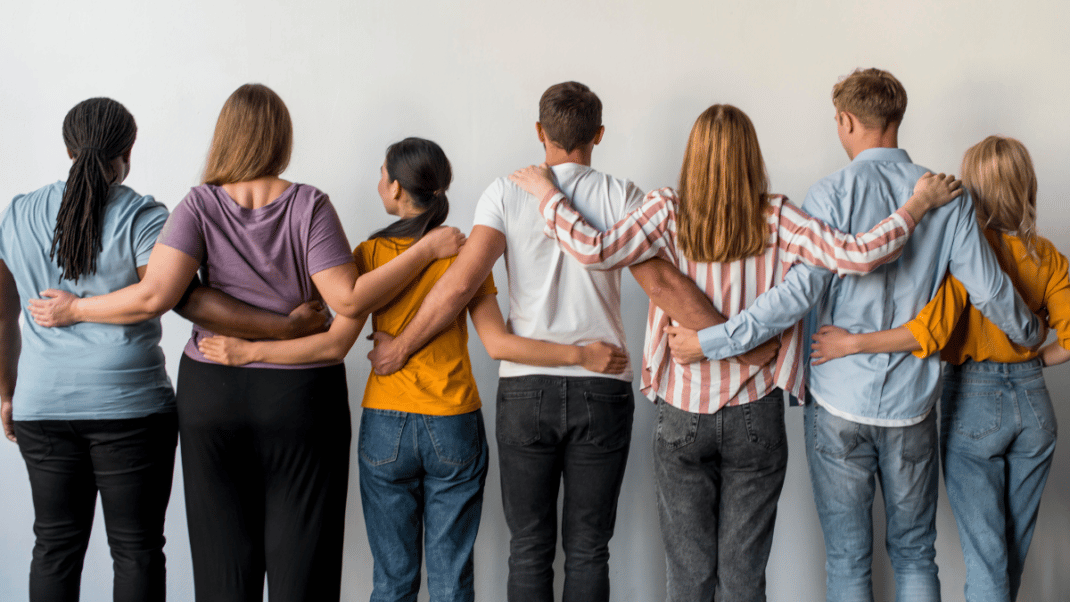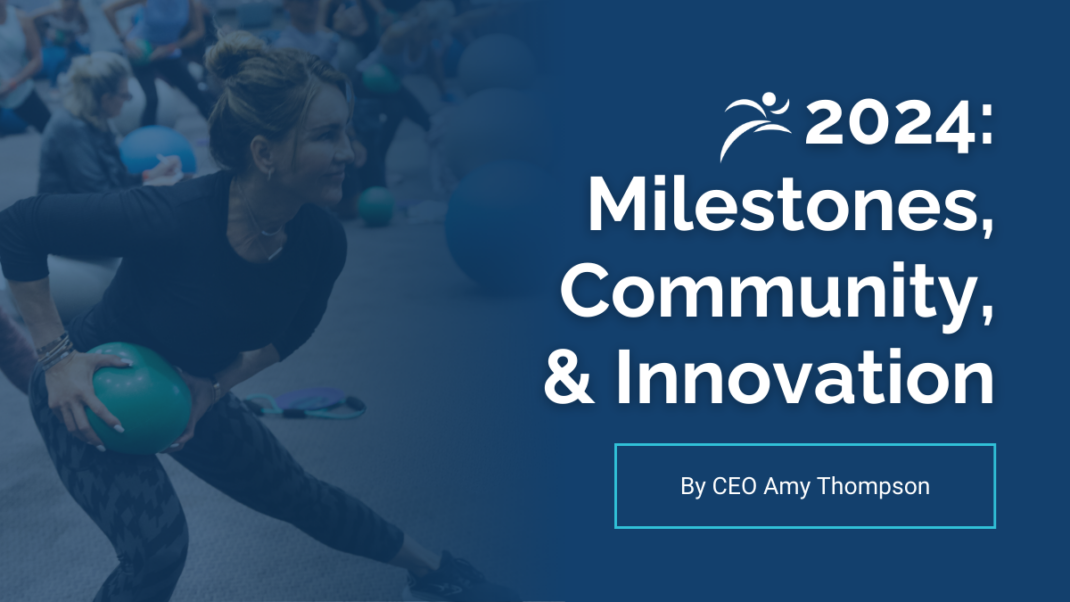The Power of Connection in the Age of Social Distancing
Social support plays a powerful role in helping people embrace healthy habits, build resiliency and even flourish in trying times.

As social beings, we are wired for human connection. Fitness professionals know this at a gut level, since we rely on a strong interpersonal dynamic to help our clients achieve their goals. It may then come as no surprise that this instinctive feeling has been borne out by numerous studies on the mental and physical benefits of positive relationships.
The COVID-19 pandemic has significantly affected our ability to build and foster such connections with our clients (and each other). Gym closures, mask mandates and social distancing have forced us to learn how to live and love at a distance. So, as we adapt our methods of doing business (taking payments, sterilizing equipment, etc.), we must also consider how we can adapt the ways we provide social support and human connection.
This article examines some of the key strategies that science has proven to be effective and impactful in this realm, as well as insights and suggestions to help fitness professionals apply those strategies in creative ways during this “new normal” and beyond.
How Social Support Helps Us in the Best of Times

The positive benefits of human connection make good social support extremely important.
Positive relationships have been described as a key pillar of well-being (Seligman 2011; Seligman 2018) and have been associated with both physical health (Uchino 2009) and longevity (Holt-Lunstad, Smith & Layton 2010). Also, positive, high-quality relationships have been shown to bolster mental health and happiness (Thoits 2011) and the experience of positive emotions (Algoe 2019). On the other hand, a lack of positive, high-quality relationships can be a risk factor for poor health (Umberson, Crosnoe & Reczek 2010). It seems that human connection and positive relationships paint a mosaic of positive benefits for us as humans, making good social support extremely important.
How and why are social relationships and human connection so vital for our health and well-being? Current research suggests there are many mechanisms at work.
Making Healthy Tasks Possible
On a very basic level, human connection can create opportunities for people to be healthy. A simple way this happens is when one person gives someone else a particular type of help with a task, thereby facilitating a healthy activity (Umberson, Crosnoe & Reczek 2010). This is known as instrumental support.
Think of a parent driving a child to soccer practice: The child could not attend practice without her parent physically transporting her. This is instrumental support. Another example is a spouse cooking a healthy meal for his partner, who might otherwise resort to choosing a less nutritious option. Simply put, by receiving specific aid, individuals may participate in certain health-enhancing behaviors they would not normally be able to do.
Supporting Healthy Habits
We, as humans, tend to take on the same behaviors as those with whom we surround ourselves. Thus, people who have positive influences in their social circles may engage in healthier behaviors.
For example, research analysis by Umberson, Crosnoe & Reczek (2020) suggests that adolescents’ health behaviors are associated with those of their peers. And a study on college students in Brazil found that social support from friends predicted whether someone would reach the recommended level of physical activity each week. This was true even if the person’s intention to engage in physical activity was low at the outset (de Paiva et al. 2016). From this, it can be seen that social support can keep people engaged in positive health behaviors, such as working out.
Unfortunately, peers can be equally influential with regard to negative health behaviors. One study found an association between peer influence and disordered eating in sixth, seventh and eighth graders (Meyer & Gast 2008).
While these studies show association, not causation, they emphasize how important it is for us to have people in our lives whose positive influence supports engagement in healthy behaviors. Positive relationships and everyday interactions can be beneficial in their own right, just by making people feel connected, supported and loved.
See also: Training Happy for Positive Behavioral Change
Why Connection Matters Even More Right Now

Fostering relationships and human connection is one way to help all of us cope, recover and begin to flourish.
You have likely heard from family, friends, fellow co-workers, clients, fitness class participants and other gym-goers that 2020 has been a particularly challenging year due to the coronavirus pandemic. You have probably been challenged in new ways, too. Fortunately, fostering relationships and human connection is one way to help all of us cope, recover and begin to flourish once more. Here are three ways in which connection makes a difference.
It Helps Us Cope with Stress
Simply having familiar people around can buffer us from certain stressors (Boothby & Clark 2018).
In fact, research suggests that how we perceive our social support heavily affects how we manage our stress. The stress-buffering hypothesis states that if our assessment is that we have enough social support, we will be more likely to manage our stress better (McKinley 2020; Cohen & Wills 1985). McKinley, a researcher at Western University in Ontario, further suggests that bringing social support to light is important during a stressful situation like COVID-19 (McKinley 2020).
Social support can also prevent us from engaging in less-healthy coping strategies. A recent study examined reported alcohol consumption and social support among nearly 2,000 students at a university in northeast Ohio following the announcement of the school’s closure in spring 2020. Overall, students indicated that their alcohol intake rose—in both amount and frequency—post-closure, with the greatest increases occurring among students reporting more symptoms of depression and anxiety. On the other hand, alcohol consumption was lower overall among students who perceived they had strong social support (Lechner et al. 2020). Thus, social support may aid people in managing new challenges.
It Fosters Resilience
Supportive relationships can boost our ability to bounce back from stressful circumstances, also referred to as resilience. Though each individual’s specific situation and response will be different, those with positive, healthy relationships are shown to have greater well-being than people without these connections, even when both groups face the same hardships (Gittell 2016).
It Helps US Flourish
Human connection can help us not only rebound from difficulties but actually flourish. According to Seligman (2011), to flourish is to go beyond simple happiness and well-being. Flourishing—or increasing a person’s level of flourishing—is the goal of Seligman’s PERMA Theory of Well-Being. According to this theory, we can increase our level of flourishing by increasing five key elements that make up the mnemonic PERMA: Positive emotion, Engagement, Relationships, Meaning and Accomplishment. Thus, developing positive relationships can lead to greater levels of flourishing (Seligman 2011; Seligman 2018).
Behaviors That Make People Feel Connected
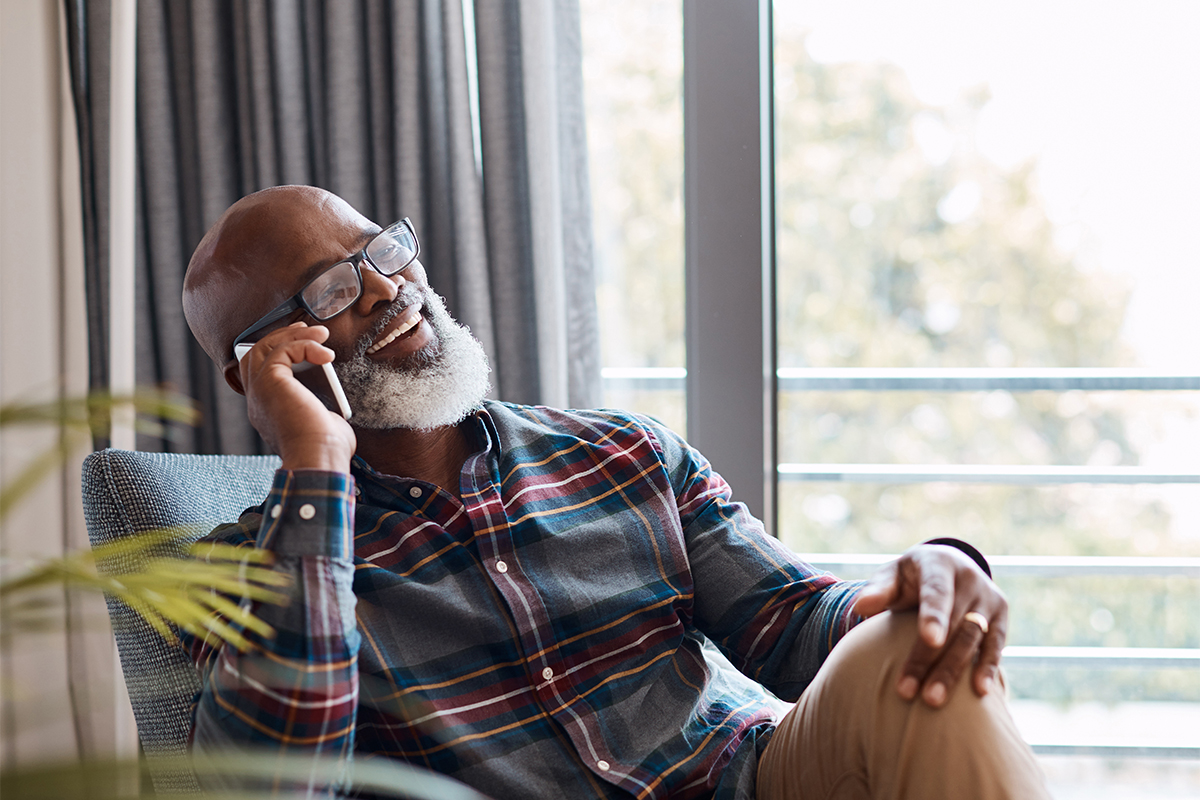
When fitness professionals are responsive to the outreach of clients or members, these individuals feel heard and connected.
Research suggests there are common behaviors that make people feel loved and connected. Although there are countless ways to connect with people, this article dives more deeply into three concepts: showing compassion, being responsive to people’s outreach for help, and providing more “moments” of love and connection.
These three methods are directly applicable to creating connection in person and, in many ways, are transferable to online formats during the COVID-19 pandemic. The concepts apply to relationships with loved ones and colleagues alike and can be implemented in brief, everyday interactions (e.g., when passing someone in the hallway at a fitness facility).
Show Compassion in Person and Online
One way to connect with people who are sharing their hardships is to show compassion. The data suggests that there is strong agreement that demonstrating compassion is a way for humans to extend a loving gesture.
In a study conducted at Penn State University, 495 U.S. adults ages 18–93 were asked which common everyday scenarios they thought most people would consider “loving.” One scenario that most people chose was “someone shows compassion towards them in difficult times.” This scenario won out over things like “someone tells them ‘I love you’” and “they spend time with their family” (Heshmati et al. 2019).
According to the Greater Good Science Center at the University of California, Berkeley, the word compassion literally means “to suffer together.” It moves beyond sympathy (feeling bad for someone) or empathy (looking at the situation from another’s perspective). Compassion includes those feelings as well as a desire to help ease the other person’s suffering (GGSC 2020).
Be Responsive to Outreach
When someone reaches out to you, it’s an opportunity to build a secure relationship with that person and to convey a feeling of being in a safe space. This is linked to a concept in developmental psychology called attachment theory.
According to Yip et al. (2018), attachment theory states that each of us has an innate system that motivates us to look for support in times of need, including when we’re in the workplace. Within attachment theory there are multiple attachment styles that can form, based on our interactions with an attachment figure (the person we are seeking support from). This article will address only one attachment style: secure attachment.
In secure attachment, we feel that our attachment figure will respond to our needs when we seek support. Think about the relationship between infant and a parent. In a secure attachment style, an infant who cries feels that the attachment figure (the parent) will be responsive. This type of relationship can create what feels like secure support and a safe haven (Yip et al. 2018).
When fitness professionals are responsive to the outreach of clients or members, these individuals feel heard and connected. This provides an opportunity for us to strengthen the professional relationship and potentially help people buffer stress during these challenging times.
See also: Increasing Professionalism: Building Relationships
Create More Micro-Moments of Connection
While we often associate “loving moments” with romantic relationships, close friendships or family, Fredrickson (2016) suggests that we can have nonpassionate loving moments anywhere and with anyone.
For a moment, think about how our closest high-quality relationships include countless small and beautiful moments, threaded together across time like crystals on a necklace. Now also consider the fleeting feeling of camaraderie you get when you catch the eye of a fellow runner passing you on a particularly challenging trail. This is an example of having a positive moment with someone you don’t know very well (or at all); the moment can still feel very meaningful.
These micro-moments of love and connection are part of a concept referred to as positivity resonance, which differs from compassion and responsiveness in that it takes a little buy-in from both sides.
What, exactly, makes up a moment of positivity resonance? According to Fredrickson, there are three main components: mutual care or concern, shared positive emotion, and behavioral and biological synchrony. These elements all contribute to a moment associated with well-being.
Mutual care and concern refers to both people feeling invested—even if only for a moment—in each other’s well-being.
Shared positive emotion is exactly what it sounds like: a pleasant feeling or sentiment shared between two people.
Behavioral and biological synchrony refers to the mirroring of nonverbal behaviors, such as body language, and the simultaneous action of biological processes, such as inhaling and exhaling at the same time.
On a momentary level, this type of connection with others can be rich and healthy for us in many ways. Three studies conducted by the University of North Carolina at Chapel Hill and the University of Richmond in Virginia looked at the connection between positivity resonance and indicators of health. Greater levels of flourishing mental health were associated with positivity resonance in all three studies. The research also showed support for an association between perceived positivity resonance and fewer illness symptoms, lower levels of depression and fewer feelings of loneliness (Major et al. 2018).
Connecting the Dots With Clients
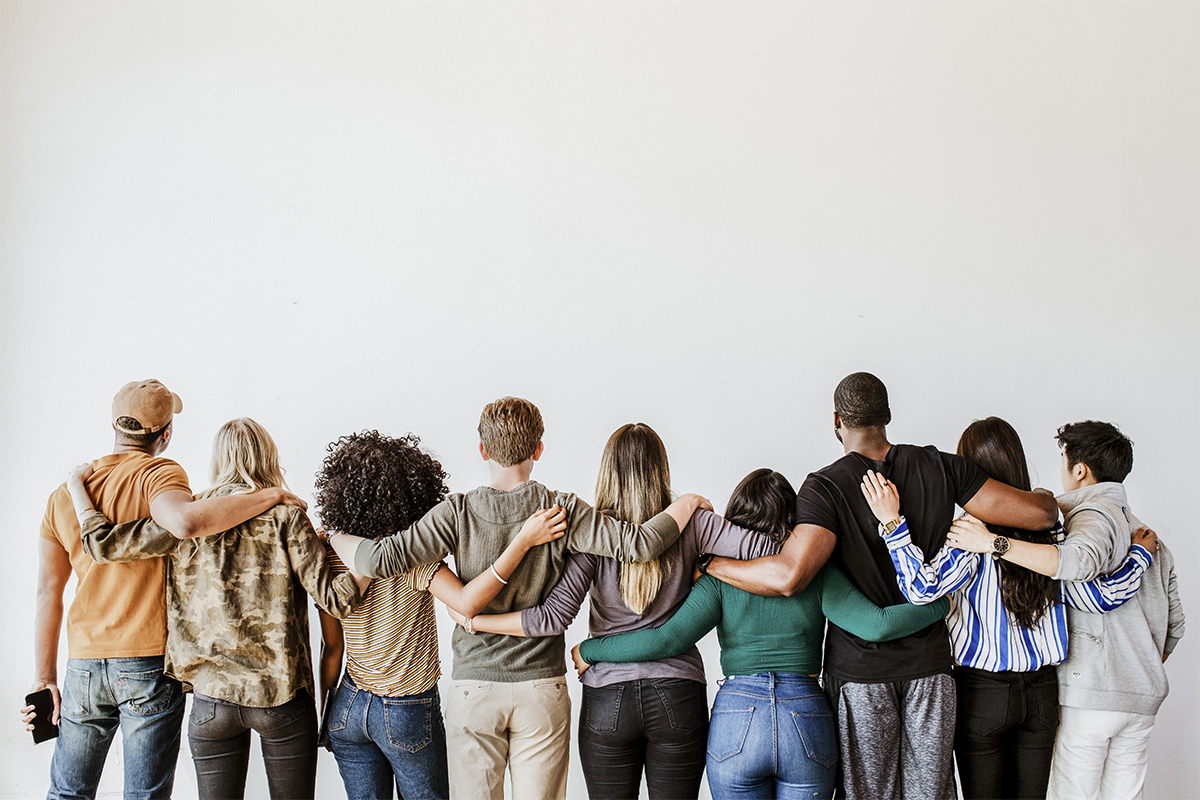
Clients and members may have tangible needs that you can help with or at least discuss.
Making people feel loved, supported and connected, especially during times like the COVID-19 pandemic, can be helpful for them personally and for you professionally. Below are some ways to demonstrate your compassion and responsiveness, while also creating more micro-moments of connection with gym members and clients. (To read about how one instructor duo applied many of these suggestions to their recent challenges, see “A Case Study: Building Connections After COVID-19 Closures,” below.)
Ask questions. Clients and members may have tangible needs that you can help with or at least discuss. Don’t wait for them to come to you: Reach out to them in person (from 6 feet away) or via phone, email or Zoom. If they do not have the protective supplies they need to feel safe when working out, offer instrumental support by providing sanitizer, cleaning supplies and disposable masks.
Listen closely. Keys to active listening include focusing on what the speaker is saying (rather than forming your response), being open-minded and nonjudgmental, paraphrasing what you heard (to be sure you understood correctly), and asking questions for clarification (Center for Creative Leadership 2020). Once you fully understand a client’s concerns, you will be better able to address them.
Follow up. For clients who voiced concerns on a previous occasion, following up can be a great way to express your care and concern. You might ask these clients whether they feel comfortable with what your facility is doing or whether all of their questions have been answered.
Refer out. As fitness professionals, we know that building a human connection and creating strong bonds can be incredibly important for health and well-being; however, if you have clients who are experiencing mental health concerns, be sure to refer them to an appropriate resource, such as a therapist or counselor. While a fitness professional can provide social support, talking someone through mental health issues may not be within the fitness pro’s scope of practice. Connecting clients with the right support will help to set them up for success in the long run.
Be patient. Remember that, although we aim to create strong bonds with others, forming those bonds can be a gradual process. To manage the feeling of needing to do everything at once, practice focusing on one moment or one interaction at a time. This can help build positive moments and positive relationships overall.
The Big Picture: We’re All Connected
A fitness facility can be much more than a space for people to work out. It can be a home for employees to grow and develop, as well as a place that cares about each member’s overall well-being.
By actively working on our relationships and creating more opportunities for positive interactions with others, we can work toward a world where more people feel connected. We can create spaces where people feel welcome and where they can develop not only their physical well-being but their social well-being, as well. Our actions now can create a more positive future for the fitness industry and beyond.
Questions to Spark Ideas That Build Connection
To take action that will support the well-being of others—clients, members, co-workers, friends or family members—ask yourself these questions. Consider how you can help, both in person and via a digital platform or phone call.
- How are my behaviors and choices affecting their well-being? What evidence can I see of things that are working (or not)?
- How can I reach out to people in a way that will be truly meaningful to them and sensitive to their needs?
- What can I do right now to provide a “safe space” for them to share their questions and concerns?
- What long-term impact do I hope to have on their well-being, and what is the first step I can take toward achieving that?
- How can I offer instrumental support?
- How can I be enough of a presence to model healthy behaviors?
- How can I share healthy strategies for coping with stress?
- How can I be more compassionate each day?
- How can I be more responsive to their needs?
- How can I build more micro-moments of connection into our interactions?
A Case Study: Building Connection After COVID-19 Closures
Shortly after the COVID-19 shutdown forced their facilities to close, two California group fitness instructors—Tom Donohue and Lianne Cooper—put their heads together to respond to the concerns of fitness club members who had reached out for help.
Donohue (a cycling and aquatics instructor from Palm Springs) and Cooper (a certified personal trainer and certified Les Mills BODYPUMPTM, RPMTM and SPRINTTM instructor from Rancho Mirage) decided that one way they could stay connected with members was to host a Zoom call. This would keep people in the loop about what was happening at the facilities but also reconnect members with one another and thereby strengthen their fitness support systems.
Donohue and Cooper opened up the conversation, inviting people to ask questions and to describe how they were feeling. The fitness pros actively listened to members’ concerns to make sure people felt heard. Then they asked follow-up questions to get clarification and additional information they could use to brainstorm solutions.
For example, one question was, “What would make you feel comfortable enough to go back to the gym?” In response, members brought up concerns of facility cleanliness, but this led to a discussion of logistics, too. They wanted to know whether they would be able to get into their preferred classes if preregistration was required. As each new topic arose, the instructors continued to listen actively to the responses and to ask clarifying questions from there.
These efforts showed that Donohue and Cooper cared about their members’ concerns and wanted to be there for people.
References
Algoe, S.B. 2019. Positive interpersonal processes. Current Directions in Psychological Science, 28 (2), 183–88.
Boothby, E.J., & Clark, M.S. 2018. Side by side: How merely being with a close other can enhance well-being. In D.S. Dunn (Ed.), Positive Psychology: Established and Emerging Issues (pp. 80–93). New York: Routledge/Taylor & Francis Group.
Center for Creative Leadership. 2020. Use active listening to coach others. Accessed Aug. 25, 2020: ccl.org/articles/leading-effectively-articles/coaching-others-use-active-listening-skills/.
Cohen, S., & Wills, T.A. 1985. Stress, social support, and the buffering hypothesis, Psychological Bulletin, 98 (2), 310–57.
de Paiva, H.K., et al. 2016. Association between intention for physical activity practice, social support and physical activity. Revista Brasileira de Cineantropometria & Desempenho Humano, 18 (6), 667–77.
Fredrickson, B.L. 2016. Love: Positivity resonance as a fresh, evidence-based perspective on an age-old topic. In L.F. Barrett, M. Lewis, & J.M. Haviland-Jones (Eds.), Handbook of Emotions (pp. 847–58). New York: Guilford Press.
Gittell, J.H. 2016. Rethinking autonomy: Relationships as a source of resilience in a changing healthcare system. Health Services Research, 51 (5), 1701–05.
GGSC (Greater Good Science Center at UC Berkeley). 2020. What is compassion? Greater Good Magazine. Accessed Aug. 25, 2020: greatergood.berkeley.edu/topic/compassion/definition.
Heshmati, S., et al. 2019. What does it mean to feel loved: Cultural consensus and individual differences. Journal of Social and Personal Relationships, 36 (1), 214–43.
Holt-Lunstad, J., Smith, T.B., & Layton, J.B. 2010. Social relationships and mortality risk: A meta-analytic review, PLOS Medicine, 7 (7), e1000316.
Lechner, W.V., et al. 2020. Changes in alcohol use as a function of psychological distress and social support following COVID-19 related university closings. Addictive Behaviors, 11 (110), 106527.
Major, B.C., et al. 2018. Well-being correlates of perceived positivity resonance: Evidence from trait and episode-level assessments. Personality and Social Psychology Bulletin, 44 (12), 1631–47.
McKinley, G.P. 2020. We need each other: Social supports during COVID-19. Social Anthropology, 28 (2), 319–20.
Meyer, T.A., & Gast, J. 2008. The effects of peer influence on disordered eating behavior. The Journal of School Nursing, 24 (1), 36–42.
Seligman, M.E.P. 2011. Flourish: A Visionary New Understanding of Happiness and Well-being. New York: Atria Books.
Seligman, M. 2018. PERMA and the building blocks of well-being. The Journal of Positive Psychology, 13 (4), 333–35.
Thoits, P.A. 2011. Mechanisms linking social ties and support to physical and mental health. Journal of Health and Social Behavior, 52 (2), 145–61.
Uchino, B.N. 2009. Understanding the links between social support and physical health: A life-span perspective with emphasis on the separability of perceived and received support. Perspectives on Psychological Science, 4 (3), 236–55.
Umberson, D., Crosnoe, R., & Reczek, C. 2010. Social relationships and health behavior across life course. Annual Review of Sociology, 36, 139–57.
Yip, J., et al. 2018. Attachment theory at work: A review and directions for future research. Journal of Organizational Behavior, 39 (2), 185–98.
Olivia Ellis, MS
Olivia Ellis, MS, is a doctorate student studying Positive Developmental Psychology at Claremont Graduate University and specializes in integrating positive psychology into the fitness industry. She is an adjunct professor, personal trainer, group fitness instructor, and previously worked on the management side of fitness.


